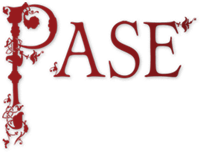Leofrun 11
Leofrun ‘of Marston’ (Somerset), fl. 1066
Female
DWP
4 of 5
Summary
Leofrun 11 was a minor thegn with three estates in south-east Somerset and north Dorset TRE assessed at 4½ hides and with a value of more than £6; she held at least some of her lands with power of alienation.Distribution map of property and lordships associated with this name in DB
List of property and lordships associated with this name in DB
Holder 1066
| Shire | Phil. ref. | Vill | DB Spelling | Holder 1066 | Lord 1066 | Tenant-in-Chief 1086 | 1086 Subtenant | Fiscal Value | 1066 Value | 1086 Value | Conf. | Show on Map |
|---|---|---|---|---|---|---|---|---|---|---|---|---|
| Dorset | 54,2 | Stourton Caundle | Leuerone | Leofrun 'of Marston' | - | Hugh the woodman | - | 0.50 | 0.00 | 0.00 | C | Map |
| Dorset | 56,54 | Stourton Caundle | Leueron | Leofrun 'of Marston' | - | Godric 'of Stourton Caundle' | - | 1.00 | 0.50 | 0.50 | C | Map |
| Somerset | 19,72 | Marston Magna | - | Leofrun 'of Marston' | - | Robert, count of Mortain | - | 3.00 | 6.00 | 6.00 | B | Map |
| Totals | ||||||||||||
Profile
Leofrun 11’s largest estate was at Marston Magna, by a crossing of a tributary of the River Yeo in south-east Somerset. DB states simply that four thegns held 5 hides there TRE but does not give their names or what share of the land each had held. However, more detail is provided by the corresponding entries in Exon Domesday (at 278b3) and the Terrae Occupatae (at 523a5). From these it is apparent that the main estate of 3 hides had been held by Leofrun 11 and that 1 hide held by Eadræd 39 TRE and another hide held by Sæweard and his mother TRE had been added to Leofrun’s former estate after the Conquest.The TO entry also states that these added hides had been held ‘in parage’ (pariter) TRE, although the Exon entry states that all 5 hides had been held in parage. Land held ‘in parage’ was usually impartible land held between co-heirs, which means that the TO entry implies that there was a familial link between Eadræd and Sæweard and his mother but need not indicate a similar relationship with Leofrun, whereas the Exon entry could indicate such a relationship. In either case, there is the strong suggestion that all these lands were held freehold rather than leasehold TRE and hence the necessity for their status and merger to be recorded in the TO despite there being no irregularity apparent in their post-Conquest tenure.
Although Leofrun was a common name it is probable that Leofrun 11 was also the TRE holder of two smaller estates at Stourton Caundle, in a small valley draining into the Blackmoor Vale in north Dorset, because although these passed to different post-Conquest successors – both from each other and from the Marston estate – they were less than 9 miles from Leofrun 11’s estate at Marston. No other estate within 85 miles was recorded by DB as being held TRE by a woman called Leofrun, so the relatively close proximity of Marston and Caundle renders it probable that all three estates were held by the same woman.
The total assessment of Leofrun’s three estates was 4½ hides but their combined value is unknown because DB gives no value for the smaller of her Caundle estates and for the other it records only the 1086 value of 10s; the TRE value of her Marston estate can be calculated as £6. DB does, however, note that the Marston estate was among those whose TRE holders ‘could go to any lord they wished’, which indicates that Leofrun held the estate with power of alienation.
It is perhaps notable that another tiny estate at Caundle (albeit at what is now Purse Caundle, slightly to the north-west of Stourton Caundle) was held by a man called Sæweard who was probably the same as the Sæweard who held part of Marston, although this need not add weight to the use of pariter in Exon and the TO and imply that Leofrun and Sæweard were related.
